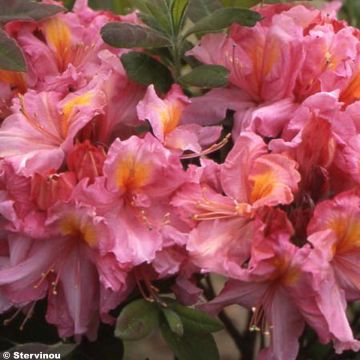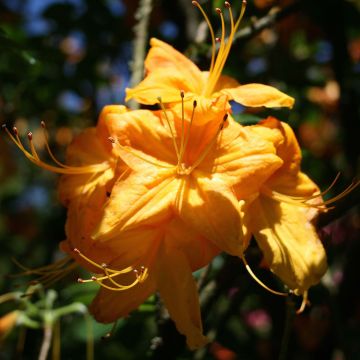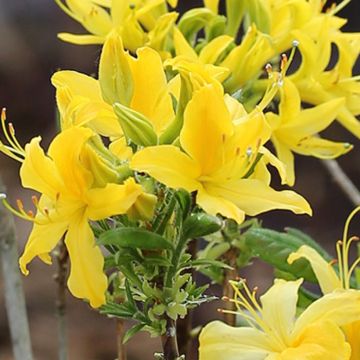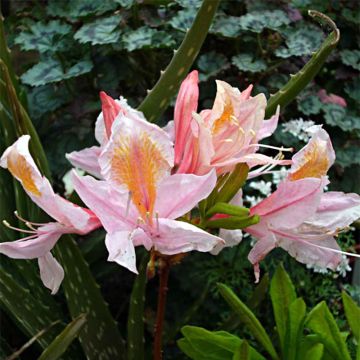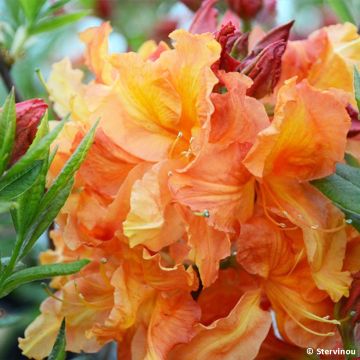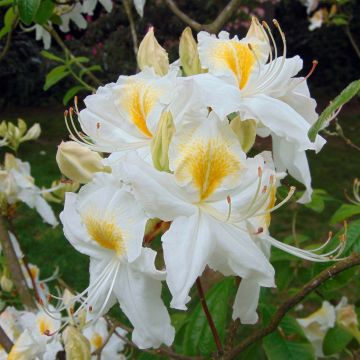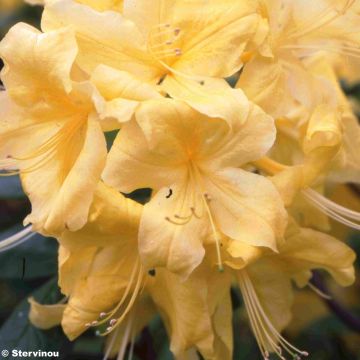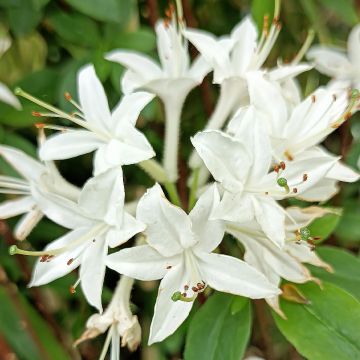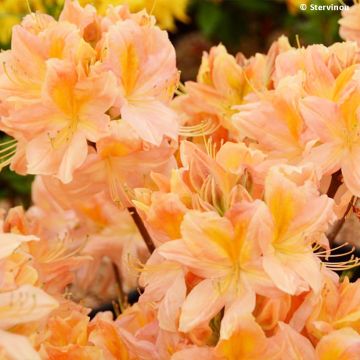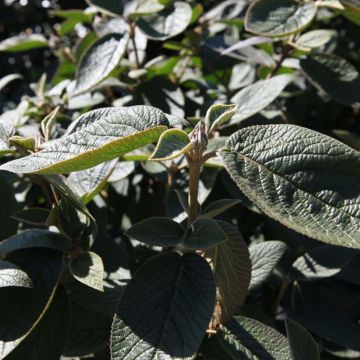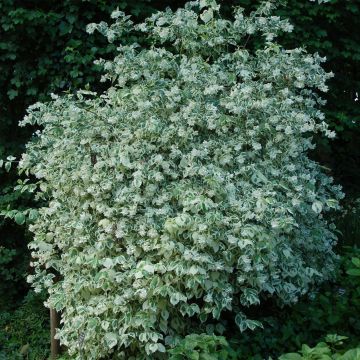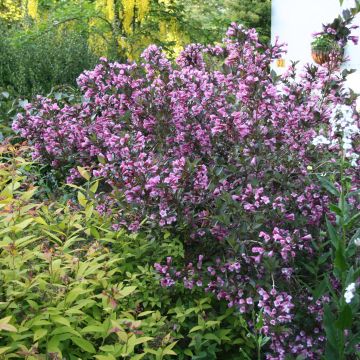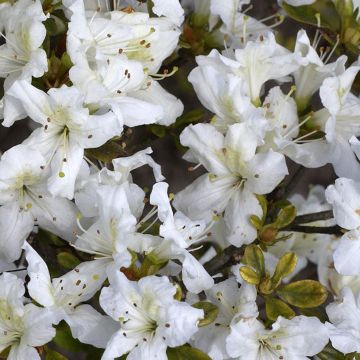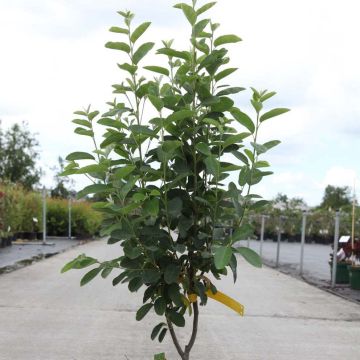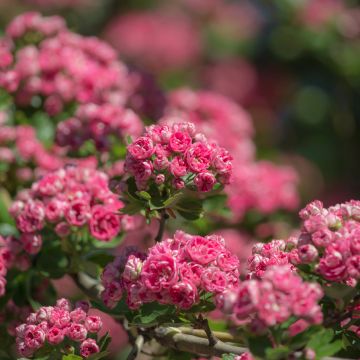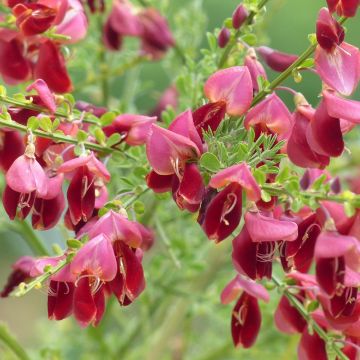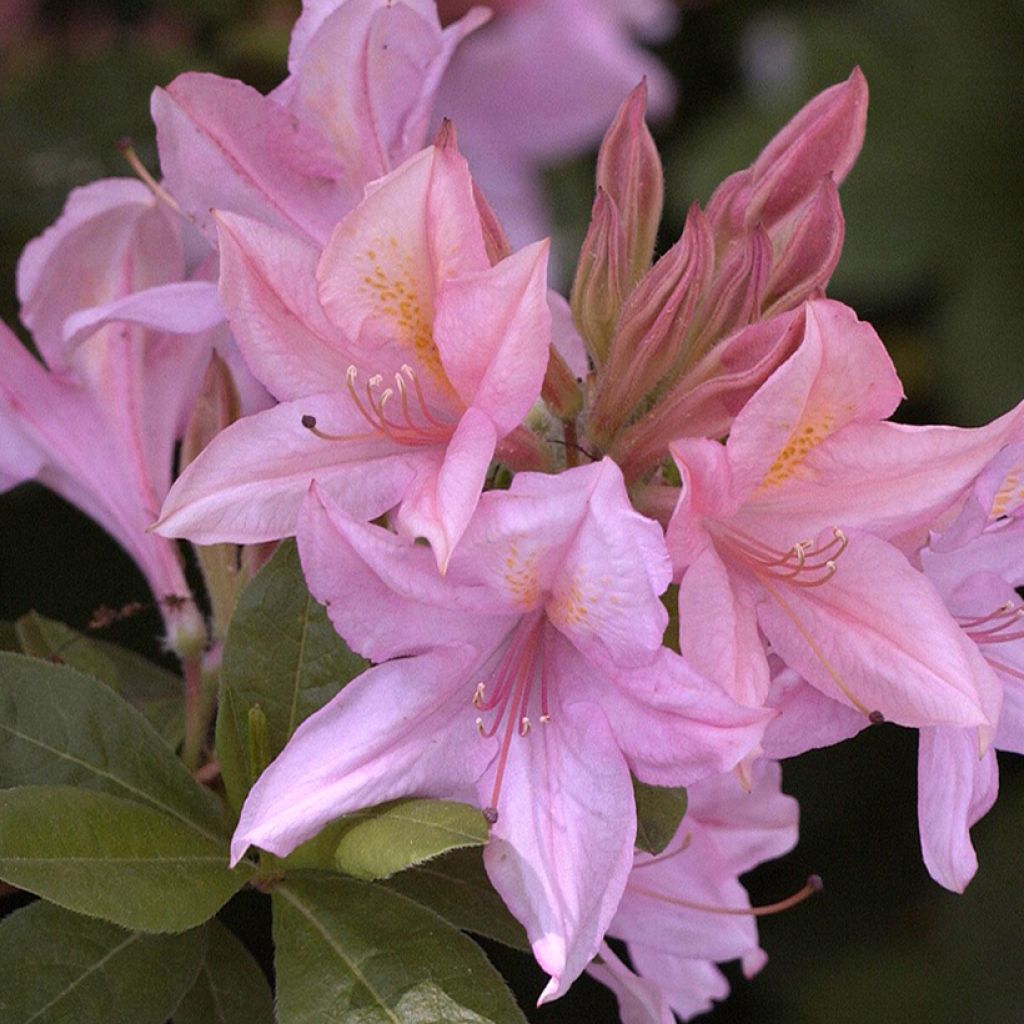

Rhododendron Soir de Paris
Rhododendron Soir de Paris
Rhododendron (Azalea) Soir de Paris
This item cannot be shipped to the selected country
Delivery charge from €5.90
More information
Schedule delivery date,
and select date in basket
This plant carries a 24 months recovery warranty
More information
We guarantee the quality of our plants for a full growing cycle, and will replace at our expense any plant that fails to recover under normal climatic and planting conditions.
From €5.90 for pickup delivery and €6.90 for home delivery
Express home delivery from €8.90.
Does this plant fit my garden?
Set up your Plantfit profile →
Description
Rhododendron 'Soir de Paris' is an attractive variety of Chinese azalea with splendid clusters of light pink flowers in late spring. These lovely star-shaped flowers are pleasantly fragrant and catch everyone's attention. This medium-sized bush gradually widens with age and has beautiful deciduous green foliage. It is very hardy and easy to grow. It needs humus-bearing, acidic soil that does not dry out in summer. This plant needs cool to moist conditions.
In terms of botany, azaleas are a type of rhododendron, with flowers that have 5 stamens instead of 10. They belong to the Ericaceae family, which is rich in ornamental species such as heathers, kalmias, and leucothoe, as well as small fruits like blueberries or strawberry trees.
Rhododendron 'Soir de Paris' was introduced to the market in 1938 by the breeder B.B.C. Felix de Boskoop in the Netherlands. Despite its age, this variety has retained all its attractiveness and won a prize in 2017 at the Saint-Jean-de-Beauregard plant festival, dedicated that year to fragrant plants.
This medium-sized bush starts its growth with an upright habit before gradually widening with age, reaching an average height of 1.4 to 1.5m (5ft) and a spread of 1.6 to 1.8m (5 to 6ft) after 10 years of cultivation in the ground. The bright green deciduous foliage consists of lanceolate leaves that are elongated and pointed at the end. It forms a beautiful backdrop for the abundant flowering that blooms from late May to mid-June. It develops large clusters of 8 to 11 flowers, each with a diameter of 5 to 6cm (2in). The trumpet-shaped corollas are formed by pointed petals, creating large star-shaped flowers in a lovely light pink colour. The upper petal is adorned with two orange-yellow veins that give relief to the corolla. The tightly packed flowers form extremely decorative spheres that few other flowering shrubs can rival.
Deciduous Chinese azaleas have less requirements than evergreen Japanese azaleas. They are very hardy and tolerate sunny exposures better. Nevertheless, they give their best in cool climates with marked winters, planted in humus-bearing and fertile soil without limestone. The ideal soil should be slightly acidic and should not dry out, as this bush appreciates soil moisture and even humidity. Its running and shallow root system does not like drought at all. In hot climates, it is wise to plant it in partial shade and water it regularly. It is very hardy and can withstand temperatures as low as -20°C (-4°F) without flinching.
Rhododendron 'Soir de Paris' will be the centre of attention in spring with its dazzling flowering. Plant it in a border with other ericaceous plants, choosing blooms spread throughout the different seasons. In winter, witch hazels will offer you their filamentous and unique flowers in shades of yellow, orange, red, or purple, depending on the variety. You can plant them in the background to create a screen of vegetation, whose autumnal colours will burst into a horticultural fireworks display. A star magnolia will enchant the beginning of spring with its irresistible pure white stars. Add in Hydrangea macrophylla 'Blaumeise', whose blueish flat heads will bloom from July to September. Finally, an autumn camellia will provide flowers as the season draws to a close.
Report an error about the product description
Plant habit
Flowering
Foliage
Botanical data
Rhododendron (Azalea)
Soir de Paris
Ericaceae
Cultivar or hybrid
Other Chinese Azalea
Planting and care
Rhododendron 'Soir de Paris' enjoys a sunny location, but its preferred exposure is partial shade or morning sun, especially in hot regions. Plant it in neutral or slightly acidic, humus-bearing soil. It grows well in rich and humus-bearing soil that is moist or even wet (but still well-drained) without drying out in summer.
Soak the root ball in a bucket for fifteen minutes to ensure it is well-watered. When planting, the top of the root ball should be level with the existing ground. Water abundantly during dry periods, at least once a week during the first year. Apply fertiliser in spring. After flowering, lightly prune to maintain a tidy plant, although pruning is not essential. Remove faded flowers to extend the flowering period.
It is not prone to many diseases when properly established outdoors. It can be attacked by weevils that eat the edges of the leaves and rootlets, as well as by the famous "rhododendron beetle" which rarely causes significant damage. If the soil is chalky or poorly drained, and if the plant is planted too deeply, the leaves may turn yellow.
Planting period
Intended location
Care
This item has not been reviewed yet - be the first to leave a review about it.
Spring-flowering shrubs
Haven't found what you were looking for?
Hardiness is the lowest winter temperature a plant can endure without suffering serious damage or even dying. However, hardiness is affected by location (a sheltered area, such as a patio), protection (winter cover) and soil type (hardiness is improved by well-drained soil).

Photo Sharing Terms & Conditions
In order to encourage gardeners to interact and share their experiences, Promesse de fleurs offers various media enabling content to be uploaded onto its Site - in particular via the ‘Photo sharing’ module.
The User agrees to refrain from:
- Posting any content that is illegal, prejudicial, insulting, racist, inciteful to hatred, revisionist, contrary to public decency, that infringes on privacy or on the privacy rights of third parties, in particular the publicity rights of persons and goods, intellectual property rights, or the right to privacy.
- Submitting content on behalf of a third party;
- Impersonate the identity of a third party and/or publish any personal information about a third party;
In general, the User undertakes to refrain from any unethical behaviour.
All Content (in particular text, comments, files, images, photos, videos, creative works, etc.), which may be subject to property or intellectual property rights, image or other private rights, shall remain the property of the User, subject to the limited rights granted by the terms of the licence granted by Promesse de fleurs as stated below. Users are at liberty to publish or not to publish such Content on the Site, notably via the ‘Photo Sharing’ facility, and accept that this Content shall be made public and freely accessible, notably on the Internet.
Users further acknowledge, undertake to have ,and guarantee that they hold all necessary rights and permissions to publish such material on the Site, in particular with regard to the legislation in force pertaining to any privacy, property, intellectual property, image, or contractual rights, or rights of any other nature. By publishing such Content on the Site, Users acknowledge accepting full liability as publishers of the Content within the meaning of the law, and grant Promesse de fleurs, free of charge, an inclusive, worldwide licence for the said Content for the entire duration of its publication, including all reproduction, representation, up/downloading, displaying, performing, transmission, and storage rights.
Users also grant permission for their name to be linked to the Content and accept that this link may not always be made available.
By engaging in posting material, Users consent to their Content becoming automatically accessible on the Internet, in particular on other sites and/or blogs and/or web pages of the Promesse de fleurs site, including in particular social pages and the Promesse de fleurs catalogue.
Users may secure the removal of entrusted content free of charge by issuing a simple request via our contact form.
The flowering period indicated on our website applies to countries and regions located in USDA zone 8 (France, the United Kingdom, Ireland, the Netherlands, etc.)
It will vary according to where you live:
- In zones 9 to 10 (Italy, Spain, Greece, etc.), flowering will occur about 2 to 4 weeks earlier.
- In zones 6 to 7 (Germany, Poland, Slovenia, and lower mountainous regions), flowering will be delayed by 2 to 3 weeks.
- In zone 5 (Central Europe, Scandinavia), blooming will be delayed by 3 to 5 weeks.
In temperate climates, pruning of spring-flowering shrubs (forsythia, spireas, etc.) should be done just after flowering.
Pruning of summer-flowering shrubs (Indian Lilac, Perovskia, etc.) can be done in winter or spring.
In cold regions as well as with frost-sensitive plants, avoid pruning too early when severe frosts may still occur.
The planting period indicated on our website applies to countries and regions located in USDA zone 8 (France, United Kingdom, Ireland, Netherlands).
It will vary according to where you live:
- In Mediterranean zones (Marseille, Madrid, Milan, etc.), autumn and winter are the best planting periods.
- In continental zones (Strasbourg, Munich, Vienna, etc.), delay planting by 2 to 3 weeks in spring and bring it forward by 2 to 4 weeks in autumn.
- In mountainous regions (the Alps, Pyrenees, Carpathians, etc.), it is best to plant in late spring (May-June) or late summer (August-September).
The harvesting period indicated on our website applies to countries and regions in USDA zone 8 (France, England, Ireland, the Netherlands).
In colder areas (Scandinavia, Poland, Austria...) fruit and vegetable harvests are likely to be delayed by 3-4 weeks.
In warmer areas (Italy, Spain, Greece, etc.), harvesting will probably take place earlier, depending on weather conditions.
The sowing periods indicated on our website apply to countries and regions within USDA Zone 8 (France, UK, Ireland, Netherlands).
In colder areas (Scandinavia, Poland, Austria...), delay any outdoor sowing by 3-4 weeks, or sow under glass.
In warmer climes (Italy, Spain, Greece, etc.), bring outdoor sowing forward by a few weeks.

































